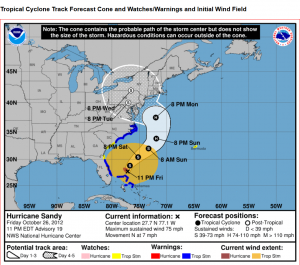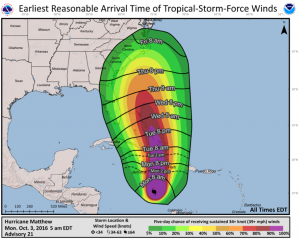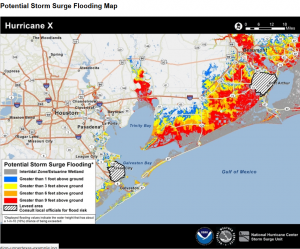Memorial Day in Action
Yesterday, May 29th was Memorial Day, our nation’s commemoration of the sacrifices made by those whose lives were lost for the freedoms we hold sacred. Whether our veterans survived their military service, or were killed on the field of battle, our country owes each of them, and their families, a debt of gratitude.
As we look back at the wars proposed by presidents, declared by Congress, and supported to varying degrees by our citizens, let’s remember that none of these conflicts were or, to this day, are immune from political and social controversy. But we should never confuse debate over military policy with the need to be respectful of those whose lives are at risk on the battlefield, in the air, or on the seas. Our freedoms were earned, bled for, and in many cases, died for.
Memorial Day presents the chance to gather our thoughts and honor the military service of our parents and grandparents, sons and daughters, brothers and sisters, aunts, uncles and cousins. In honor of those we’ve lost, let’s not be passive about the importance of their sacrifice; let’s re-dedicate ourselves to being Americans, and:
- Register, vote, and urge others to do the same. Democracy demands dedication and active participation!
- Actively communicate with our elected officials about issues affecting families, including military families and people with special challenges. Remember, our elected officials work for us!
- Share your thoughts in the media by writing letters to the editor and interviewing with reporters. The media is our most cost-effective megaphone.
- Motivate youth to exercise their voice in matters which affect them. The next generation of advocates need good role modeling.
- Confront those who think that complaining about problems is sufficient. Whining is not as good as winning! Silence is not golden when there are wrongs to be corrected.
- Honor community leadership and promote active involvement by family members, friends, colleagues and neighbors as volunteers, whom I call “time philanthropists.”
- Support causes which focus on advocating positive change, prevention policies, and innovative programs. Spectatorism doesn’t produce progress.
Up next, let’s read about what’s happening in Florida and around the country.
The Dog Days of Summer – What’s Next in the Florida Legislature
 Our readers will recall that the regular session of the 2017 Legislature adjourned on May 8. In the past three weeks, there have been no less than a dozen media stories and many more tweets, Facebook posts and the like in social media with noise about a special session. So, why, you ask, do we need for legislators to come back to Tallahassee for a “Special” session?
Our readers will recall that the regular session of the 2017 Legislature adjourned on May 8. In the past three weeks, there have been no less than a dozen media stories and many more tweets, Facebook posts and the like in social media with noise about a special session. So, why, you ask, do we need for legislators to come back to Tallahassee for a “Special” session?
The term “Special Session” is just that – a session convened for a special purpose that the Governor, the House Speaker and the Senate President determine is needed. Here are some of the top reasons for a special session this summer:
- To implement the medical marijuana constitutional amendment: Currently, a handful of marijuana growers have a license to grow a very special strain of medical marijuana for a specific illness. The constitutional amendment expanded the types that can be grown and was intended to expand the number of growers. However, the regular session meetings, discussions, and debates didn’t produce any agreement on how those growers should be added and how to expand the medical marijuana industry even though the constitutional amendment mandates that Florida embrace this. So the Department of Health, good folks who LMA knows and respects, is grappling to handle the job of meeting the spirit of the constitutional amendment by its October 1 deadline. Will there be a special session to help DOH do this? It’s anyone’s guess even though Democrats, Republicans, candidates for governor, Florida’s nationally elected leaders, you name it are calling for a special session to deal with this issue. While all this debate continues, the patients who are anxiously trying to access this therapy are still suffering.
- To stop a potential veto of the budget: To say there is a philosophical disagreement between the House Speaker and Governor is an understatement and that disagreement will come to a head when the Governor decides the fate of Florida’s $83 billion budget. If he vetoes the budget, lawmakers will come back into session to either override the Governor’s veto or pass a new budget, due by the start of the fiscal year on July 1. Stay tuned as the budget hasn’t been delivered to the Governor from the Legislature as of this LMA Newsletter edition.
- To blunt workers’ compensation rate increases: The legislature did not enact workers’ comp reform to blunt the almost 15% rate increase that is hitting the mailboxes of Florida’s employers. This issue, too, is “special” and could be on the list of topics for a special session.
So as we enter the hot June/July months and the dog days of summer, we will be watching how the “special-ness” of the political arena in Tallahassee plays out. Call us if you want to place a friendly wager on what will happen!
Good News: Home Prices Up…the Economy is Grooving
The Florida Realtors released some great news for the first quarter of 2017: Sales of single-family homes statewide totaled 60,733 in Q1, 2017, up 5.1% over the Q1, 2016 figure.
The statewide median sales price for single-family existing homes in Q1, 2017 was $226,000, up 10.7% from the same time a year ago. The statewide median price for condo-townhouse properties during the quarter was $167,000, up 9.2% over the year-ago figure.
Looking at Florida’s condo-townhouse market, statewide sales totaled 26,351 during Q1 2017, up 7.6% compared to the same time in 2016. And there were fewer short sales than in the recent past with a steep decline of almost 40% in the condo and single family home markets.
The median time to a contract was 50 days for single-family homes and about that for condo-townhouse properties. Inventory was about 4 months’ supply for single-family homes and at a 6 months’ supply for condo-townhouse properties during this first quarter.
To see the full statewide housing activity reports, go to Florida Realtors Media Center and look under Latest Releases, or download the Q1 2017 data report housed under the Market Data tab.
New Look to Hurricane Season
This is not your grandmother’s map
Thursday’s official start of hurricane season brings winds of change in the look and feel of public watches and warnings, as well as a new understanding of so-called ‘gravity waves’ that seem to relate to a storm’s strength. Meantime, the financial strength of Florida’s Hurricane Catastrophe Fund that could be utilized to pay-out claims in super-size storms is stronger than ever.
The National Hurricane Center has announced it’s no longer going to wait for tropical storms and hurricanes to reach certain benchmarked wind speeds before declaring formal watches and warnings. Instead, those notices will be issued when a storm is expected to form. Storms sometimes progress unexpectedly fast – Hurricane Andrew in 1992 went from a minimal hurricane to a Cat 5 strength in less than 48 hours. Forecasters say they hope the new system will give people more time to prepare.
The “cone graphic” showing the predicted path of the storm is also changing. Instead of showing the predicted center of the storm, the size of the graphic will also (instead) reflect the size of the storm by showing any hazardous conditions occurring outside of the cone. A related graphic will show the estimated time of tropical storm-force winds for specific locations.


Also new this year: what forecasters hope will prove a better predictor of the worst part of the storm – the water. Statistics reveal 90% of direct hurricane-related deaths are caused by water-related injuries, which include storm surge. So this year’s notifications will include new storm surge watches and warnings. Forecasters will issue them when there’s a possibility of wind-driven sea water pushing inland from the coasts.


Meanwhile, down the road at the University of Miami, researchers have found a link between ocean waves and the intensity of the actual hurricane. While forecast tracks have improved over the years, figuring out how hurricanes intensify has remained more elusive. Researchers discovered subtle patterns of rings emanating from a hurricane’s eyewall that actually force air up and down violently to create waves. Using common buoys and barometers, scientists hope their successful computer simulations will lead to better predictions of storm intensity in the near future.
No matter what comes our way this hurricane season, those who run the Florida Hurricane Catastrophe Fund say the fund is in great shape to help insurance companies pay out any extraordinary residential claims after a hurricane. A report by Raymond James shows the Fund has $17.6 billion available to help make up any gap – the second year in a row the fund has more money than it statistically needs. Insurance companies contribute to the Fund through surcharges to their customers. Florida’s recent decade-long span without a major storm has allowed the fund to build a healthy balance.
South Carolina Adds Flood Mitigation
Florida another story
South Carolina has had a mitigation program encouraging risk loss reduction for almost 10 years. The program has focused on wind mitigation and this year, effective May 11, Senate Bill 315 adds flood mitigation to current South Carolina law. Establishing grants to local governments to mitigate property losses is a key component to the bill along with specific residential property grants if the property meets certain criteria. Florida ceased funding a similar program a few years ago but there are advocates, such as Senator Jeff Brandes from Pinellas County, working to resurrect programs to keep flood and wind mitigation top of mind. The South Carolina legislation can be viewed here.
Improper Policy Uncovers Widespread Fraud
Another South Florida saga
 So who doesn’t want to save money on their property insurance, right? Well there’s a right way – and a very wrong way – to go about obtaining those discounts. Thanks to a tip from Citizens Property Insurance, which unfortunately has had to become expert at sensing fraud, together with some smart investigators at the Florida Department of Financial Services (DFS), a series of South Florida businesses have been caught in a dragnet of alleged insurance fraud.
So who doesn’t want to save money on their property insurance, right? Well there’s a right way – and a very wrong way – to go about obtaining those discounts. Thanks to a tip from Citizens Property Insurance, which unfortunately has had to become expert at sensing fraud, together with some smart investigators at the Florida Department of Financial Services (DFS), a series of South Florida businesses have been caught in a dragnet of alleged insurance fraud.
It started with a single Citizens Insurance customer, an assisted living facility (ALF) in Miami, filing a claim for a broken pipe back in 2014. During the claims process, Citizens suspected that the ALF had intentionally misrepresented its business activities in an attempt to secure a cheaper, residential insurance policy rather than the required commercial policy. Citizens alerted DFS’s Bureau of Insurance Fraud. That initiated a larger series of investigations that when finished last month, had 14 ALF operators in Miami-Dade County under arrest for allegedly defrauding their insurance carriers.
An insurance agent was also arrested for forging another agent’s name on two fraudulent ALF insurance applications and was found to have an improper license. She’s now banned from working in the insurance industry. Those charged face third-degree felony charges which can carry up to a five-year prison sentence.
Unfortunately, fraud cases such as this are far too common in the Sunshine State. WJXT-TV in Jacksonville recently examined the mounting insurance fraud, from doctor’s offices to roadways. They point out in a recent year in Florida, more than $2 billion was lost to fraud, waste and abuse with even more startling statistics on healthcare fraud. You can read their blog and watch the television news story here.
Cyber Insurance Market Growing
Is your business covered?
The recent ransomware cyberattack in Europe is generating new interest in the purchase of cyber insurance, a relatively new but growing line, especially here in the U.S. About 40% of the current global market, valued at $3 billion in annual premiums, is written here in the U.S. That market is expected to grow to $7.5 billion by 2025, according to a recent story by Best’s News Service. Cyber policies typically cover three areas: cyber extortion, hacker damage and business interruption.

The cyberattack in Europe from the WannaCry ransomware fell into the extortion category, affecting more than 210,000 computers globally, including Britain’s National Health Service. The attack came in the form of an enticing email that once opened, delivered malware that accessed the computers that weren’t protected against it, encrypted the data, and then held the data for a ransom of $300 in bitcoins in exchange for a decryption key. The cybersecurity community says a criminal group named Lazarus linked to North Korea is likely behind the attack, given its similarity to a hack of the Bangladesh central bank last year that netted $81 million and the 2014 hack of Sony Pictures.
Costs of this latest cyberattack could reach upward of $1 billion, according to the U.S. Cyber Consequences Unit. Lloyds of London made a splash a couple of years ago with its estimate that such attacks cost businesses as much as $400 billion a year. But Juniper research last month predicted that the rapid digitization of consumers’ lives and enterprise records will increase the cost of data breaches over the next five years to a cumulative total of $8 trillion in fines, lost businesses, and remediation costs. Juniper points out that cybersecurity spending is increasing just 8% per year, compared to the 30% increase in cybercrime costs – thus the increasing economic sense that cyber insurance makes.
The World Economic Forum says a sizeable portion of cybercrime may remain hidden and uncounted, particularly industrial espionage, where access to confidential documents is harder to spot. And it’s not just the big banks and other large companies at risk. According to Microsoft, 20% of small to mid-sized businesses have suffered cyberattacks. Kaspersky Labs, makers of anti-virus software, estimate the average direct costs of a security break on small businesses at $38,000 ($23,000 in downtime, $10,000 in professional IT recovery services, and $5,000 in lost business opportunities).
Deloitte just came out with its Seven Hidden Costs of a CyberAttack, which include increased insurance premiums and increased cost to borrow money. Many small businesses have traditional business owner policies (BOPs) and we suggest you search your policy for hacking, cyberattacks and the like. Let us know what you find!
SCOFLA to Review Red-Light Cameras
Who’s driving the ticket train?
 The Supreme Court of Florida has agreed to review a lawsuit based on an Aventura traffic ticket that parties on both sides hope will bring clarity and uniformity to differing court decisions regarding the use of traffic cameras at Florida’s intersections. At question: is the process legal that is used to write tickets based on infractions caught on camera and if so, by whom?
The Supreme Court of Florida has agreed to review a lawsuit based on an Aventura traffic ticket that parties on both sides hope will bring clarity and uniformity to differing court decisions regarding the use of traffic cameras at Florida’s intersections. At question: is the process legal that is used to write tickets based on infractions caught on camera and if so, by whom?
Last summer, the 3rd District Court of Appeals, in an effort to gain clarity, asked the top court in Florida to provide a definitive ruling. The request came after the 3rd DCA ruled that Aventura’s red-light traffic camera program was legal, overturning a lower court decision that the city had given too much authority to the company that runs the program.
The lower court judge had thrown out the traffic ticket based on a 4th DCA ruling in 2014 on a similar case just up the road in the city of Hollywood. That case resulted in Hollywood taking its cameras down. The 3rd DCA looked at that ruling but concluded Aventura’s procedures were different: that police make the decision about ticketing motorists, weighing the evidence in the pictures and using professional judgement whether probable cause exists “in the same manner they decide to issue a roadside citation,” said the ruling.
Noting that different county courts and DCAs in Florida have come up with different rulings in recent years, the 3rd DCA said the state Supreme Court needs to resolve questions about whether cities are essentially letting camera providers issue citations. The Supreme Court’s eventual ruling could likely impact the estimated 65 different lawsuits around the state.
Also at stake are red-light camera programs in about 70 Florida cities and counties, which in a recent year issued about 963,000 such tickets. A group of trial lawyers who won in the Hollywood case filed a class-action lawsuit seeking refunds of all past $158 citations. The state, which gets 58% of the citation revenue, will also weigh in, as Attorney General Pam Bondi sided with the city of Aventura in its case.
Although there have been bills in the legislature over the past few years to regulate and outright outlaw the use of red-light cameras, neither chamber could agree with the other. Inquiring minds now wonder whether the legislature will simply await the Supremes’ ruling on these various issues before trying again. We’ll be watching and in the meantime, keep your eyes on the road and up at the yellow light as you enter the intersection!
LMA is Growing and We have YOU in Mind
Each year, when the legislative session concludes, we have waiting for us all the work and projects LMA has to put on the shelf while legislators are in town. Our team works hard during the legislative session and most certainly on non-legislative issues as well, so let us help your team succeed on whatever the project!
Having a manageable number of clients allows us to focus better and spend the time necessary to get results. This client-focused approach has withstood the test of time: we build long term relationships with our clients by making them a priority and achieving demonstrable results. We have the good fortune of serving our clients with a host of strategic partners who have special and unique talents. We’re always looking for individuals who want to join LMA as a strategic partner and have a group of clients coming on board in the near future that may need your expertise. Let us know if you want to help. Our work is rewarding and is designed for those who like to plan their work and work their plan. Look forward to hearing from you!
Aspiring to Greatness
We opened this edition with the purpose of reminding our readers about what it means to be an American. And America is full of leaders and those who will be leaders. To that end, I am reminded of a great leader who said that leadership is Caring more than others think wise; Dreaming more than others think practical; Risking more than others think safe, and Expecting more than others think possible. Enjoy your week and see you this summer!

